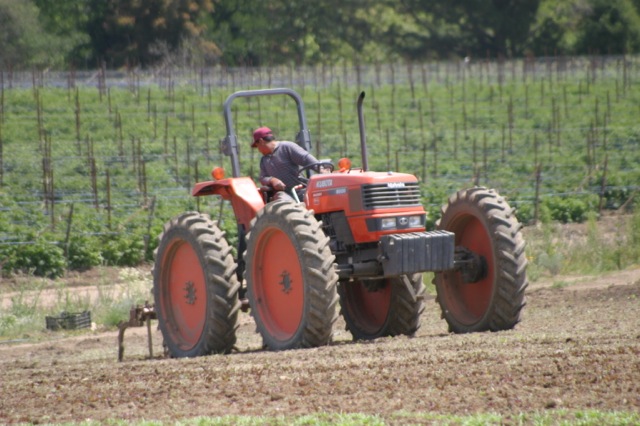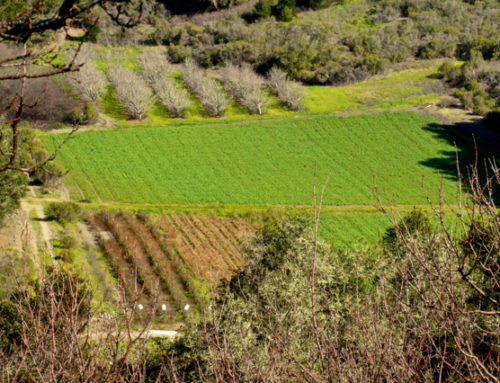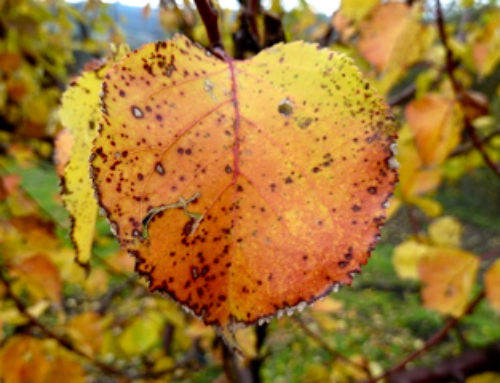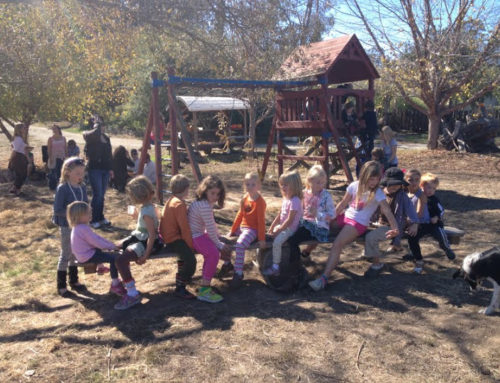The soils that should be saturated from winter rains right now are drying out instead. I notice that the “itch” I get at the beginning of every season to prepare the soil and start planting seems too early. After rejuvenating rains in December, we haven’t seen any precipitation. January should be the wettest month of the year, and it looks like it’s going to be one of our driest. Similar to last year, this worrisome drought has forced us to keep irrigating.
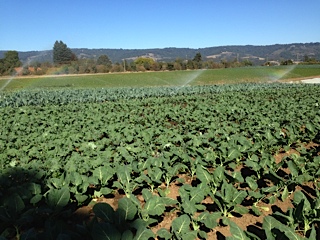
The blue sky is beautiful, yet it means irrigating crops like the ones pictured here is an ongoing necessity.
Along with every other farmer in California, I am pondering how to plan, adjust and adapt to climate change and the continuing drought conditions. With the increasingly unpredictable weather, I look to our soil to help maintain a healthy and resilient farm organism.
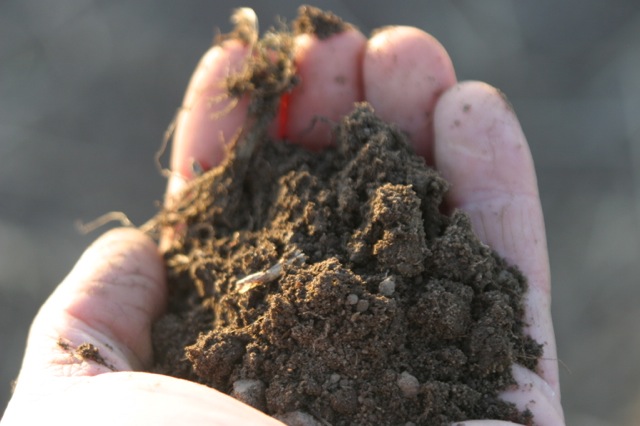
I am convinced that soil and plants hold the key to rebalancing the high CO2 concentrations in the atmosphere. Through photosynthesis plants absorb CO2, turn it into sugars which help them grow and, maybe even more importantly, feed the soil microbes, like bacteria and fungi, in and around the root-zone. These soil microorganisms serve to protect plants and help them access nutrients and minerals that roots by themselves can’t reach. The carbon that was in the air is suddenly transferred back and stored into the soil where it originally came from. There is a direct link between growing nutritious and flavorful fruits and vegetables and nurturing and growing a healthy soil.

The earthworms pictured here are part of a larger soil network that supports the crops growing in the fields.
We mimic natural soil building processes through techniques such as composting, rotating crops and using cover crops, mulching, adding soil amendments, and following careful tillage practices. These techniques allow us to grow and harvest food without depleting but instead returning carbon, fertility, and water holding capacity back to the soil. We still have much to learn yet increasingly we can point to regenerative farming practices that build and improve soil to heal the land and the atmosphere, and at the same time supply us with abundant and healthier food.

A couple of the farm’s compost piles that are almost ready to be spread over the fields.
You and me, we are all stakeholders. We all eat and sit at the same table to figure out this important challenge, maybe the most important – healing our current unsustainable relationship with nature. Our food decisions are meaningful ways to make a difference, whether joining a local farm’s CSA, shopping at the farmer’s market, making locally sourced menu choices at a restaurant, or simply cooking and sharing a meal at home, these are simple but interconnected food solutions that contribute to a healthier local and regional food web.
